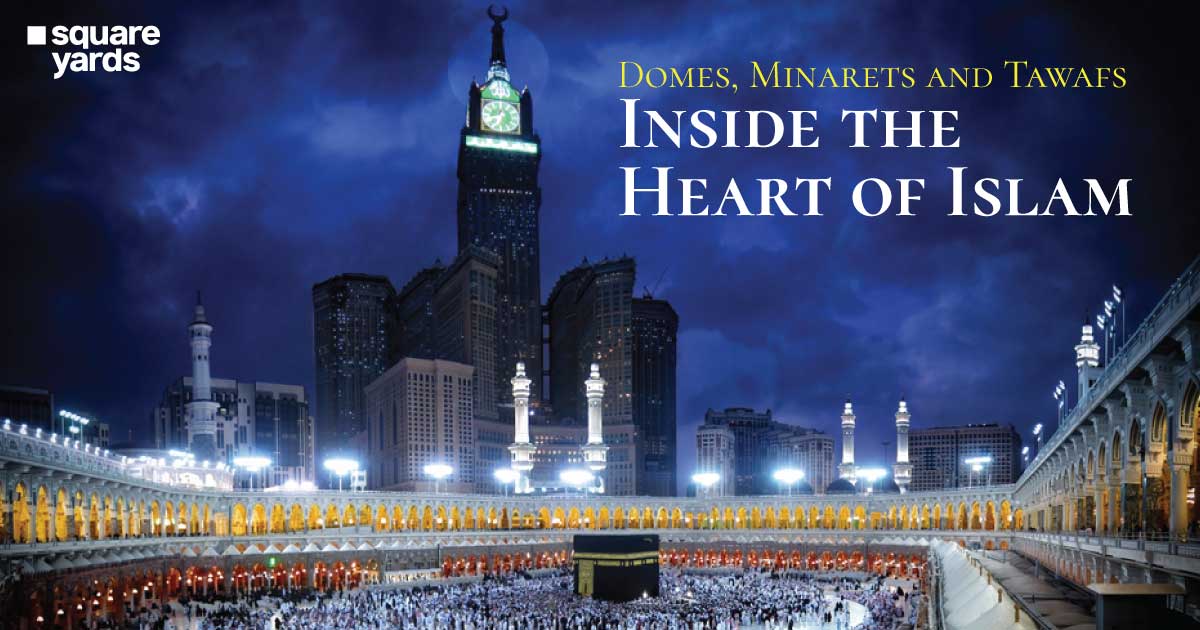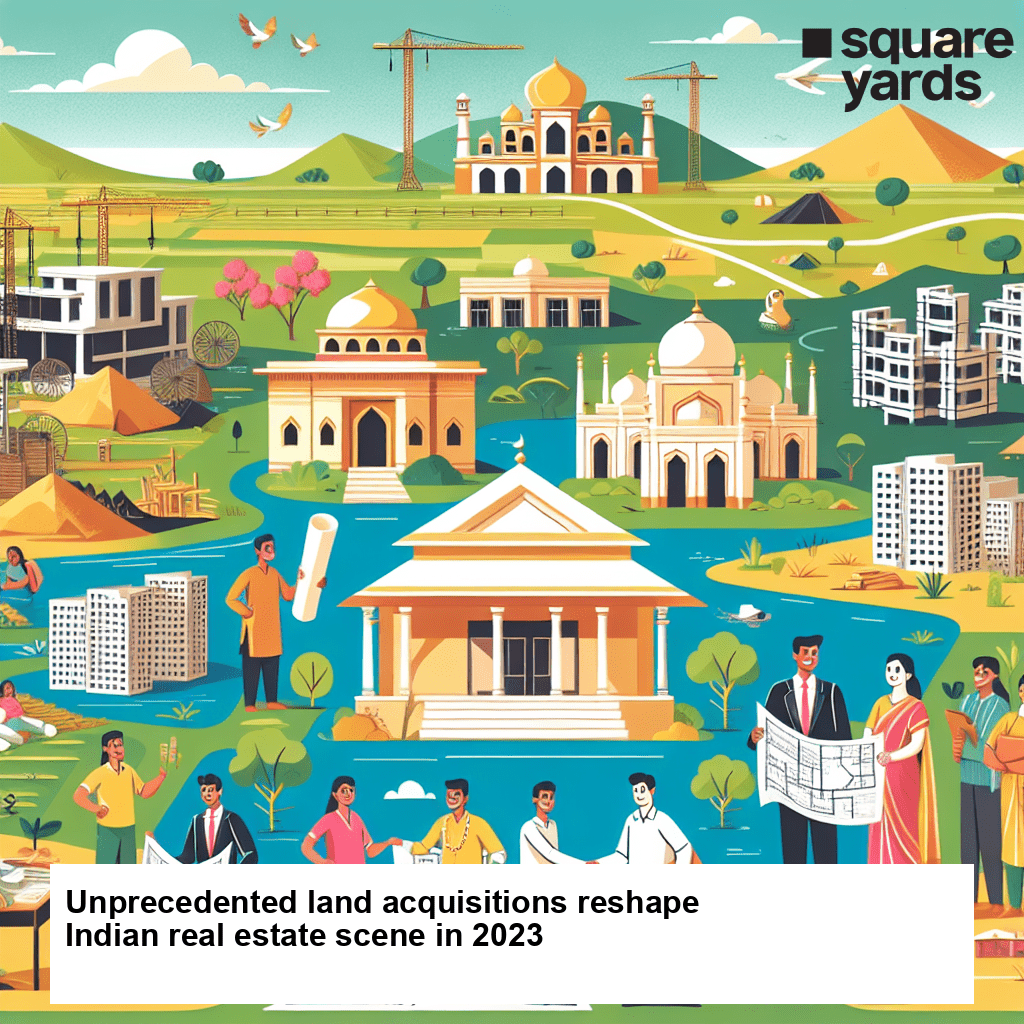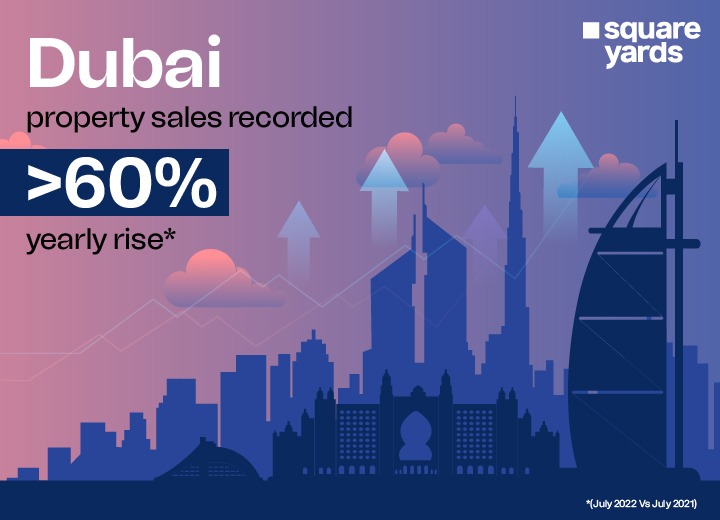“When the month of Ramadan starts, the gates of heaven are opened, the gates of hell are closed, and the devils are chained.” Sahih Al-Bukhari
As the night sky clads the crescent moon, the holy month of Ramadan begins, throwing light on spirituality, contemplation, charity, and communal unity among Muslims. This month is traditionally seen as the time when Angel Jibreel revealed the words of the Quran to Prophet Muhammad (Peace Be Upon Him) at the cave of Hira. During this period, Muslims across the globe participate in the spiritual practice of fasting from dawn to sunset, praying, reading the Quran, and performing charitable deeds.
Before we proceed further, let me tell you that 12 years ago, as a young middle school girl, I had a vague idea of Ramadan and its significance. My Muslim classmates and their fasting for the entire month intrigued me. However, I bottled up my curiosity cautiously so as not to overstep cultural boundaries. As I came across historical texts on Islam in my history class, I learned about the Five Pillars of Islam and the holy sites of Mecca and Madina. These texts further left me with profound curiosity and a heart full of questions.
Trapped in the maze of life, I sidelined my intercultural quest until last year, when it came to me on its own. A chance meeting with Asma in the narrow lanes of Zakir Nagar in Delhi illuminated my spiritual quest. As a Muslim revert, anticipating my second Ramadan, I am recalling my accounts with her and the spirits of Ramadan through the lens of the architectural splendour of Masjid Al-Haram.
Based on the moon sighting, Ramadan 2024 is set to start on March 11 or 12. This blog explores the fusion of faith and architectural wonders, leaving an enduring impact.
Spiritual Epicenter: The House of Allah
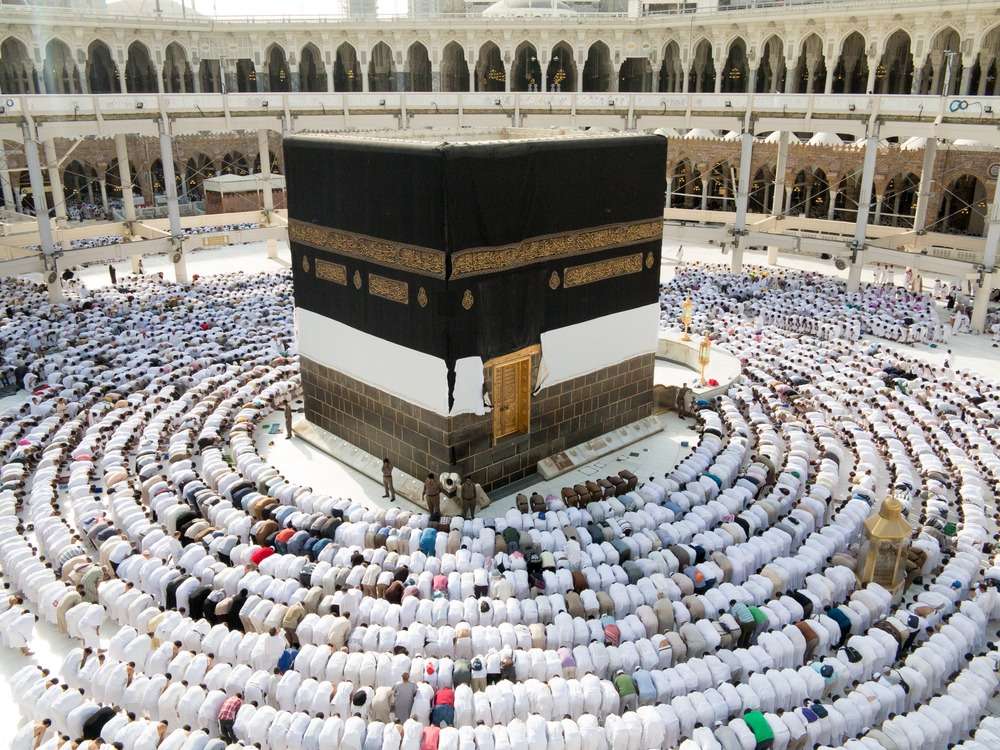
Mecca witnessed numerous historical and religious events, including the spread of Islam. It is home to the grand mosque, Masjid Al-Haram, with the Kaaba at its center, considered the heart of the Islamic faith. All Muslims turn to this epicentre for their daily prayers. The Hadiths (sayings of the Prophet) mention that the reward for offering prayer at Masjid Al-Haram is equivalent to one hundred thousand times performed elsewhere. Moreover, the site serves as a destination for Hajj (annual pilgrimage), the fifth pillar of Islam.
During the holy month of Ramadan, the house of Kaaba echoes the recitation of the Quran. The sacred month witnesses the Ummah (community) unite under the skyline of Masjid Al-Haram and engage in the act of Umrah (pilgrimage). It is believed to be more rewarding during Ramadan.
Expansions and Evolutions: Intricate Architectural Designs
As of today, Masjid Al-Haram is the largest mosque in the world, spread across an area of 187 acres with the capacity to accommodate 2.5 million worshippers. According to the Quran, the mosque was built before mankind, replicating the place of worship for angels known as al-Baytu l-Ma’mur.
Did you know the story behind this stunning mosque? The construction started in the 7th century, during the reign of Caliph Omar Ibn al-Khattab. Over the years, it underwent major transformations to accommodate several pilgrims. And let me tell you, it’s a treat for the eyes, as it is packed with architectural wonders that have been added over centuries. Pretty amazing!
Kaaba
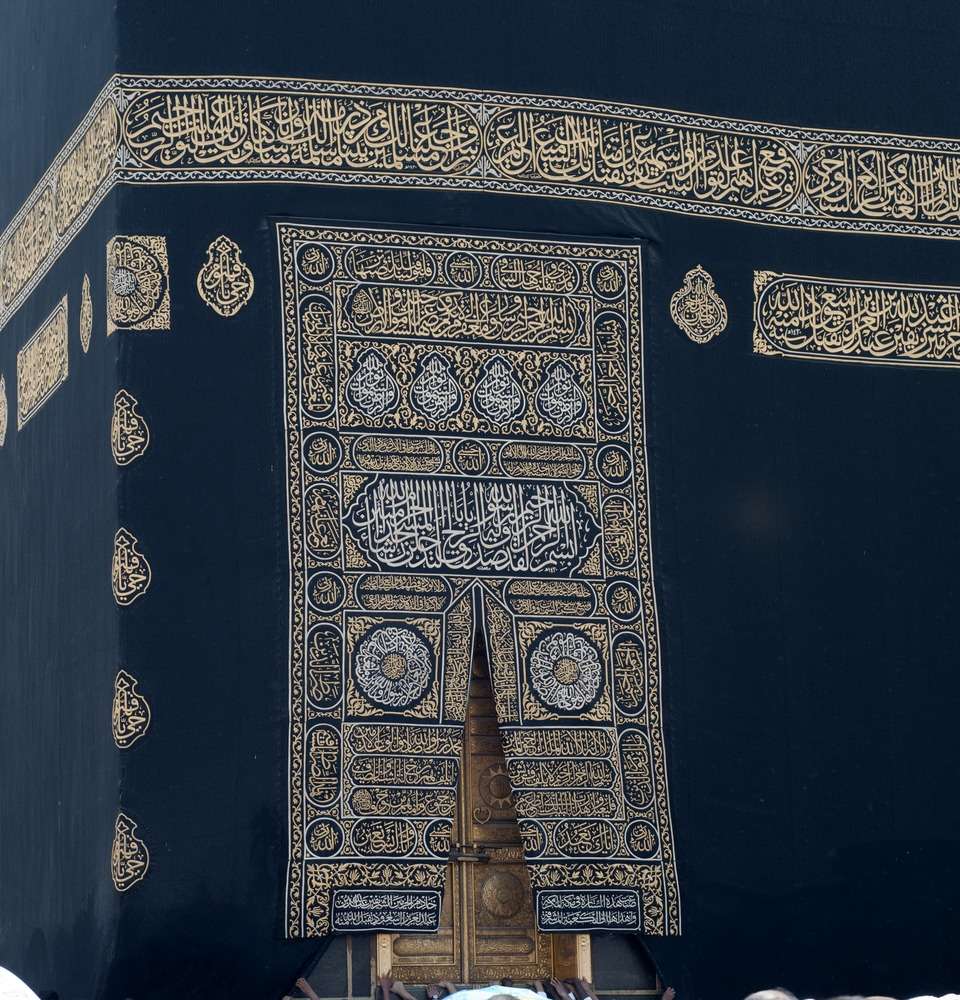
The Kaaba at the heart of Masjid Al-Haram is the direction, known as ‘qibla’, that every Muslim faces when they pray. Imagine a massive cube, about 34 feet by 39 feet, draped in a silken black cloth called Kiswah, sparkling with gold-embroidered Quran verses. The tradition of covering the Kaaba dates back to pre-Islamic times, and every year, during the Hajj, they give it a new Kiswah to keep it sacred. It features grey granite walls and marble, with Quranic verses inscribed on the upper walls. Even a ceiling made of teak wood was brought over from India during a period of renovation. Accessible through a staircase inside, the flat roof of the Kaaba is also noteworthy.
The interiors of the Kaaba, with their subdued lighting, add solemnity to the sacred site. Its walls are lined with marble, featuring Quran verses inscribed on green cloth décor. Then, there’s the Al-Hazar Al-Aswad, this significant black stone set into the Kaaba’s eastern corner. Legend has it that it dates all the way back to Adam and Eve. During Tawaf, pilgrims walk around the Kaaba and try to touch this stone.
Mataf
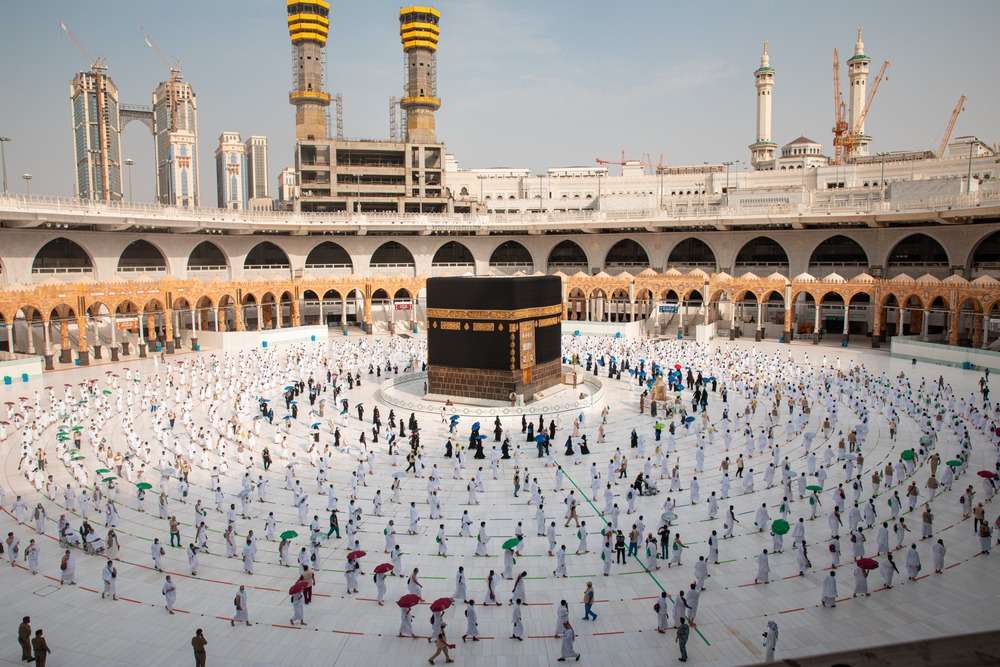
Mataf is an open space surrounding the Kaaba. It is where pilgrims perform Tawaf, a key ritual of circumambulating the Kaaba seven times in an anti-clockwise direction during Hajj and Umrah. The Mataf maintains a circular design around the Kaaba with marble flooring. Over the centuries, the Mataf underwent multiple renovations and expansions to accommodate the increasing number of pilgrims, leading to the present-day multi-level area.
Maqam Ibrahim
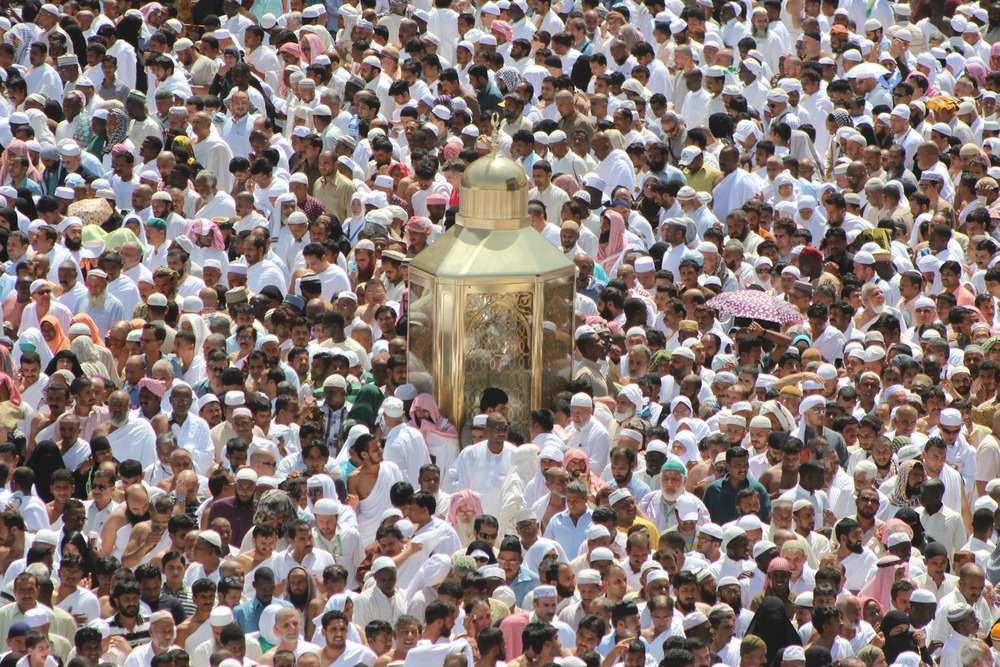
Maqam Ibrahim, known as the Station of Ibrahim, is a stone bearing the footprints of Prophet Ibrahim placed next to the Kaaba. It is believed that this spot is where Ibrahim stood, assisting his son Ishmael while building the Kaaba. The Maqam Ibrahim is enclosed in a glass case, and the Muslims are encouraged to pray behind it after Tawaf.
Minarets, Domes and Gates
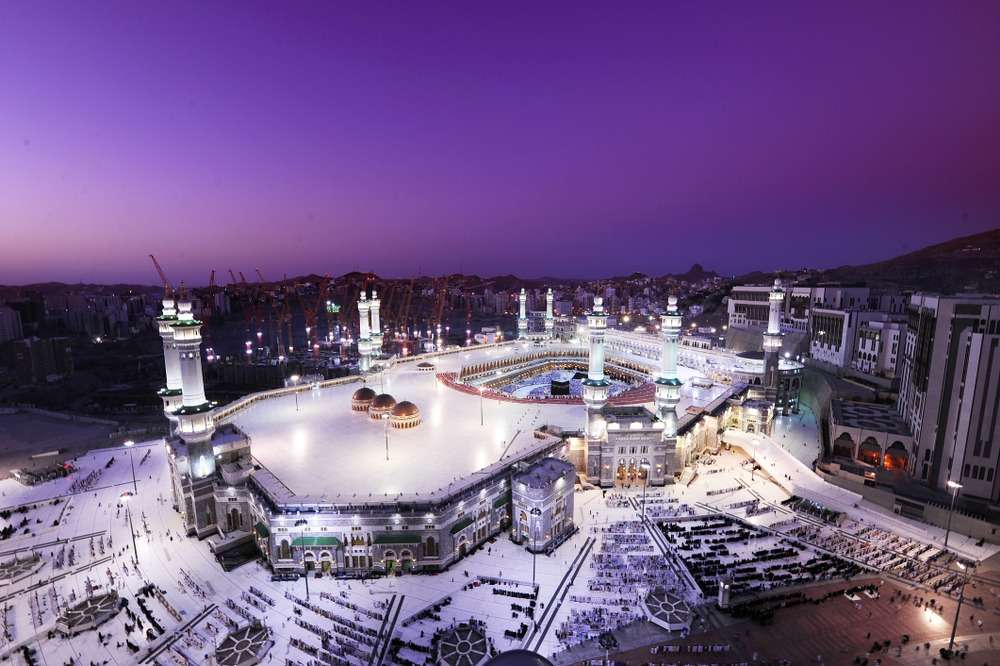
Masjid Al-Haram features several minarets, domes, and gates, each holding a strong significance. These minarets are tall towers prominently used for Adhan (call to prayer). Over the years, they have significantly increased following the mosque’s great expansion. The minarets influence a blend of various architectural styles, including Ottoman, Mamluk, and modern Saudi styles. Walking under these domes is nothing short of an artist’s dream!
The domes are covered in intricate Islamic motifs and calligraphy. They have a secret power—they carry the voice of the Imam, making sure it spreads evenly and touches every corner of the room with its warmth.
Another key highlight of the masjid is its numerous gates, each telling its own story and named after Islamic legends. These gates incorporate Islamic art, vary in size, and whisper tales of the architectural styles of the time they were born. A blend of history, art, and spirituality makes this masjid a place where every detail tells a story.
Grand Prayer Hall
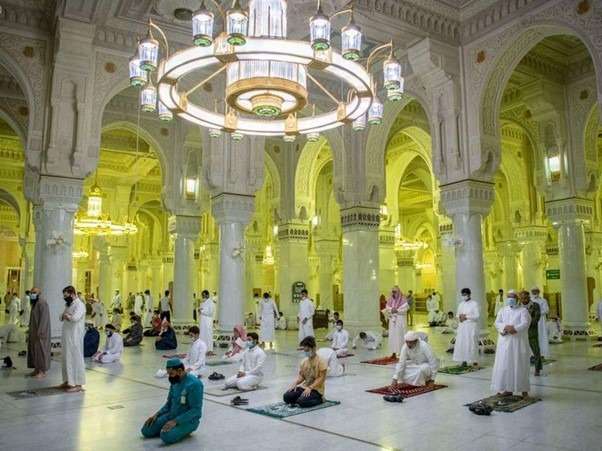
The Grand Prayer Hall, designed to accommodate millions of pilgrims, is a highlight of Masjid Al-Haram. It encompasses multi-level floors and a vast area, including open-air sections with retractable roofs. The interior of this majestic hall, clad with plush carpets, is vivified by intricate Islamic art and calligraphy. High-quality marble and mosaic add an aesthetic touch to the place’s solemn ambience.
Look around, and you’ll spot mihrabs pointing you towards the Kaaba and minbars, where the imam stands to lead prayers. And don’t worry about the heat; the hall is kitted out with air conditioning to keep everyone cool and comfortable.
Safa and Marwa
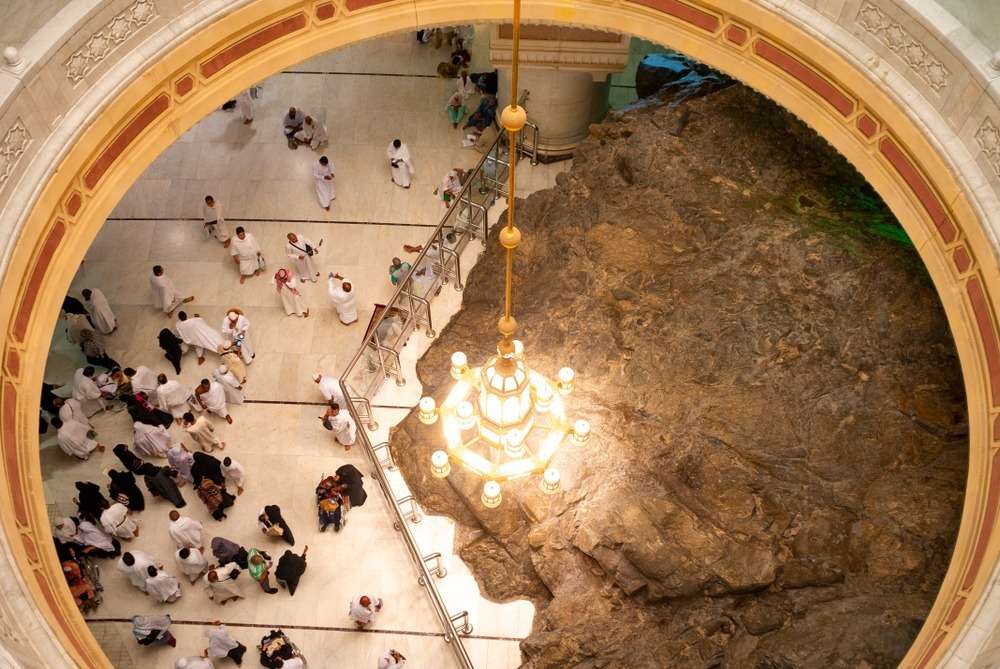
Here is a fascinating story about Safa and Marwa, two significant hills that sit inside the grand Masjid Al-Haram. Centuries ago, Prophet Ibrahim’s wife, Hagar, frantically searching for water in the scorching desert with her infant son in tow, would dart between these two hills. It’s a tale of hope, endurance, and faith.
Fast forward to the present day, pilgrims retrace Hagar’s steps as part of their Hajj pilgrimage, running between these hills to connect with her historical struggle.
But here’s the twist—with the mosque’s expansion, Safa and Marwa are now embraced within its vast structure. A sleek marble corridor with guiding green lights leads the pilgrims on their meaningful journey.
Zamzam, the Miraculous Well

Allah sent Angel Jibreel to dig a water well where Zamzam stands now to ease Hagar’s struggle to find water between the two hills. As the water kept flowing, Hagar called out, “Zom! Zom!” (Stop! Stop!) out of fear that it would run out. This is how the miraculous Zamzam got its name. Ever since, this miraculous well has been flowing for over 5,000 years, nourishing the ummah.

The pilgrims ensure to get a glass or two before ending their Hajj or Umrah journey. However, the demand for water resulted in overcrowding and unorganized lines. The authorities developed a new project for the equal distribution of holy water by placing distribution centers at every corner. It allows the water containers to be distributed to pilgrims inside buses and airports. To make it even easier and more accessible, it is delivered to your doorstep.
United by the Glowing Moon: Shared Beliefs and Observances
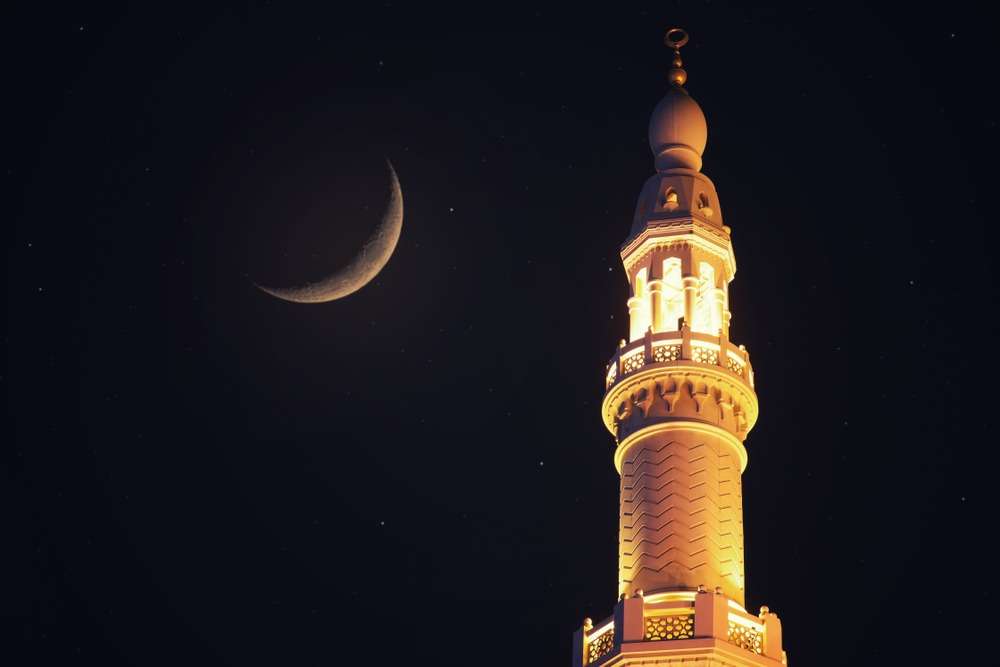
Before entering the tranquility of the mosque during Ramadan, it’s important to understand the significance of the moon in Islam.
The Prophet Muhammad (peace be upon him) had a special way of welcoming Ramadan. He told Muslims not to fast until they saw the crescent moon. If the moon played hide-and-seek and didn’t show, they should complete Sha’aban, the month before Ramadan, for 30 days. This tradition highlights the significance of the moon in determining the beginning and end of Ramadan.
It’s not just about when to start fasting; the Islamic calendar, which goes by the moon’s cycles, sets the rhythm for Muslims everywhere. The sight of the moon marks the beginning of a new month.
This Islamic lunar calendar, known as the Hijri calendar, runs 11 days shorter than the worldwide solar calendar. Moreover, reliance on the lunar calendar and the sighting of the moon unite Muslims in a shared belief, although they are divided by the boundary of the seas.
Taraweeh and Dua: Glance of the Holy Month at the Sacred Site
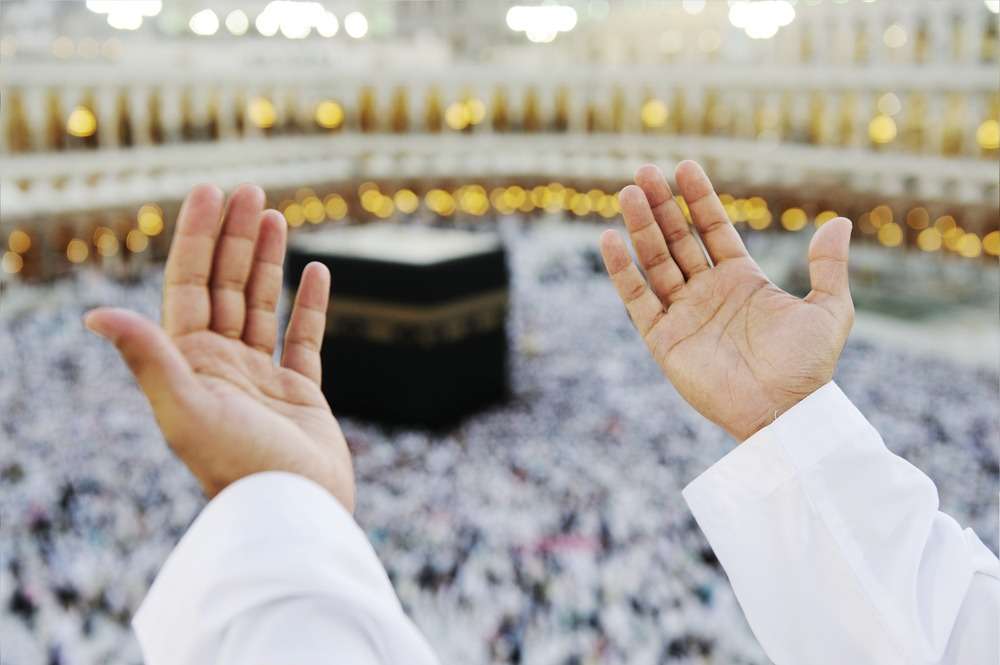
Ramadan at Masjid Al-Haram is distinct, with a unique blend of spirituality, unity, and vibrant spirits. The mosque comes to life with the recitation of the Quran and Taraweeh prayers (voluntary prayer performed after Isha, evening prayer). Breaking fast and sharing a meal during Iftar as the sun sets fosters a sense of serenity. The mosque bustles with believers engaged in prayers and supplications in the final ten days of Ramadan, known as “Laylat al-Qadr” (Night of Decree). As Ramadan ends, the mosque witnesses spiritual rejuvenation as people prepare for Eid.
The Saudi authorities facilitate this holy month by providing extensive services. For the pilgrims’ comfort, they open the roof of Masjid Al-Haram during Ramadan. This adds a celestial dimension of the night sky to the divine ambience, mimicking a connection between heaven and earth. This exhibition of the mosque’s special mix of beauty and spirit is a unique experience you won’t find anywhere else.
Ramadan Kareem

The majestic architecture of Masjid Al-Haram will witness believers across the world united under its roof. Iftar Sufras will be served at the mosque, promoting communal unity and preserving the traditional practices of Ramadan.
Ramadan Mubarak!


